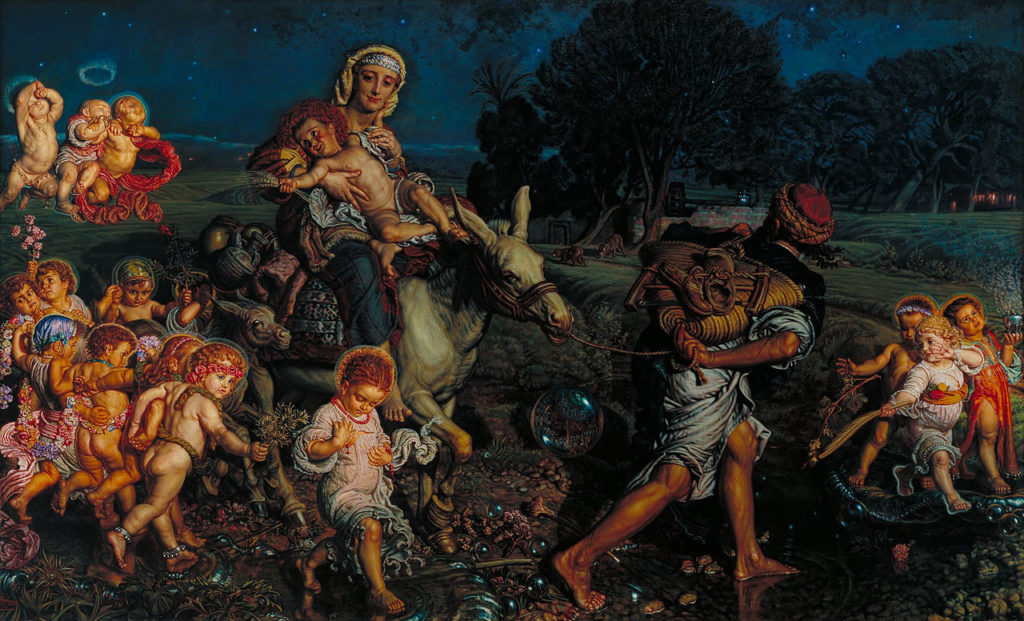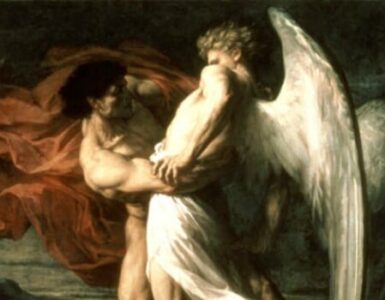Aside from the Crucifixion, the massacre of the Holy Innocents may be the most seemingly senseless and horrific acts of violence recorded in the Bible.
Herod was one of the cruelest dictators of his time. In a time of empire, his kingdom was unremarkable and small, but Herod clung to what power he did have at all cost. When he heard of the birth of an infant savior who threatened his reign, power, pride, and fear conspired within the darkened heart of this tyrant to produce an unthinkable act of evil:
When Herod realized that he had been deceived by the magi, he became furious. He ordered the massacre of all the boys in Bethlehem and its vicinity two years old and under, in accordance with the time he had ascertained from the magi (Matthew 2:16).
The Church calls these slain infants the Holy Innocents, seeing them as martyrs for Christ, not by will but by blood. The number of victims does not seem to be known. On the higher end, estimates put it at 14,000 while numbers as low as a dozen or less have also been postulated. Regardless of the number, the innocence of the victims and the senselessness of the violence continue to shock us today as they must have then.
We usually think of the Advent and Christmas seasons in terms of happy beginnings, the heavenly joy of the Incarnation itself, and the sense of hope fulfilled and renewed—leaving all the sadness, the suffering, and the darkness for Lent, so it seems.
The murder of the Holy Innocents, celebrated within the octave of Christmas, punctuates what is normally thought of as a cheerful season with a particular note of deep sadness (even considering the other martyrs celebrated during this period).
However, the Feast of the Holy Innocents, set for December 28, is not out of place. Rather, it adds a sense of urgency to the coming of Christ Himself. Jesus was born in what was supposed to be a time of great peace, the Pax Romana. If the Gospel of Luke contrasts this worldly peace with the true heavenly peace, then Matthew reminds us that the ancient world was still a place where a rogue king could summarily order the slaughter of thousands of babies.
But then, Jesus did not come to dethrone Herod.
So how can we make sense of what was an utterly senseless act? Certainly, in light of recent news events, this seems particularly imperative.
In the first place, Matthew does not try to explain it away with neat and tidy theological discourses on divine providence, free will, the finitude of evil, and the ultimate dominance of the good—not that those aren’t valid and incredibly relevant truths. But there is a fitting time and place for that. Matthew first chooses to give us an image of absolutely abject grief, taken from Jeremiah:
“A voice was heard in Ramah,
sobbing and loud lamentation;
Rachel weeping for her children,
and she would not be consoled,
since they were no more.”
And it is with that wailing lament that Matthew ends his account of the Holy Innocents. This is all the more notable because that’s not where the corresponding passage in Jeremiah ends. Instead, the prophet continues with this:
Thus says the Lord:
Cease your cries of weeping,
hold back your tears!
There is compensation for your labor …
they shall return from the enemy’s land.
There is hope for your future …
your children shall return to their own territory (Jeremiah 31:16-17).
Matthew both breaks with this narrative and imitates with its spirit. On the one hand, his story of the Holy Innocents ends with a cry of grief and nothing else. On the other hand, the next story told in Matthew 2 is of the return of Christ from the Holy Family’s self-imposed exile in Egypt. So Matthew does not force a happy ending to the story of the Holy Innocents. Instead, he brings us to a new beginning.
This is the key to the Church’s traditional response to the story of the Holy Innocents—which is to relate their deaths to Christ and His death. St. Augustine well sums up the Church’s view, declaring that the Holy Innocents both died for Christ and in His place (as cited in the Catholic Encyclopedia).
This is the true ‘hope for the future’ to which Jeremiah alludes. It’s the hope we have in Christ. It’s the hope that through Christ those children would return to their true homes in heaven (‘their own territory,’ as Jeremiah puts it).

Most artistic representations of the Holy Innocents depict horrific scenes of murder and grief. The titles of their paintings are usually some variant of The Massacre of the Innocents.
But in the nineteenth century, one English painter saw it differently. In the eyes of William Holman Hunt, the Holy Innocents are alive, joyful, and truly innocent. All are haloed. Some are rubbing their eyes. Some are dancing. They all seem to be bounding along some mystic road, treading water under their feet as spheres of liquid drift about and the stars twinkle in the night sky.
One infant is apart. He is seated, on the lap of a woman, herself on a donkey led by a man. It’s the Holy Family and they are on their way back from Egypt. They had received word from an angel that a safe return was now possible (since Herod had died).
Hunt called his painting Triumph of the Holy Innocents.
✠















